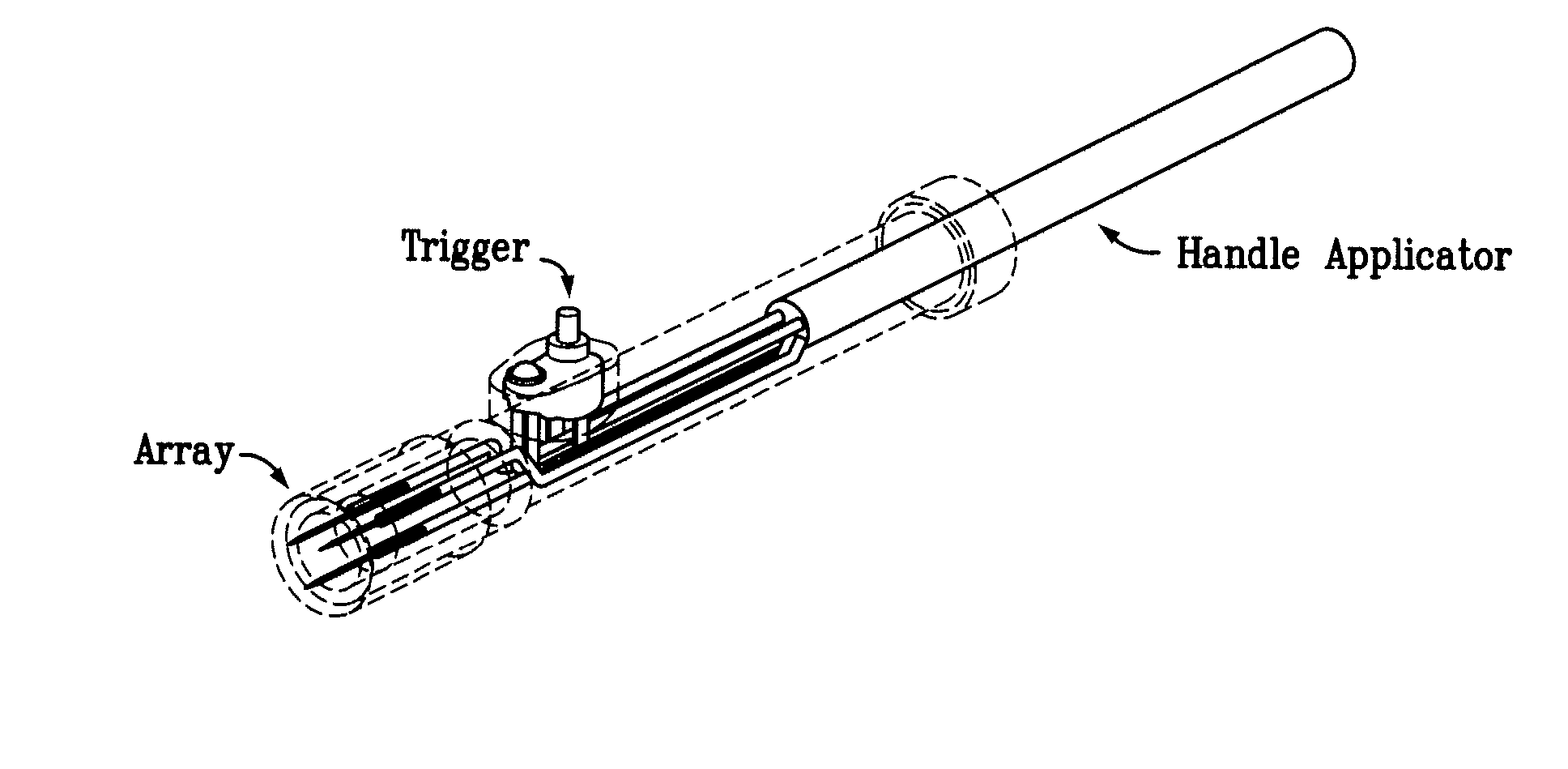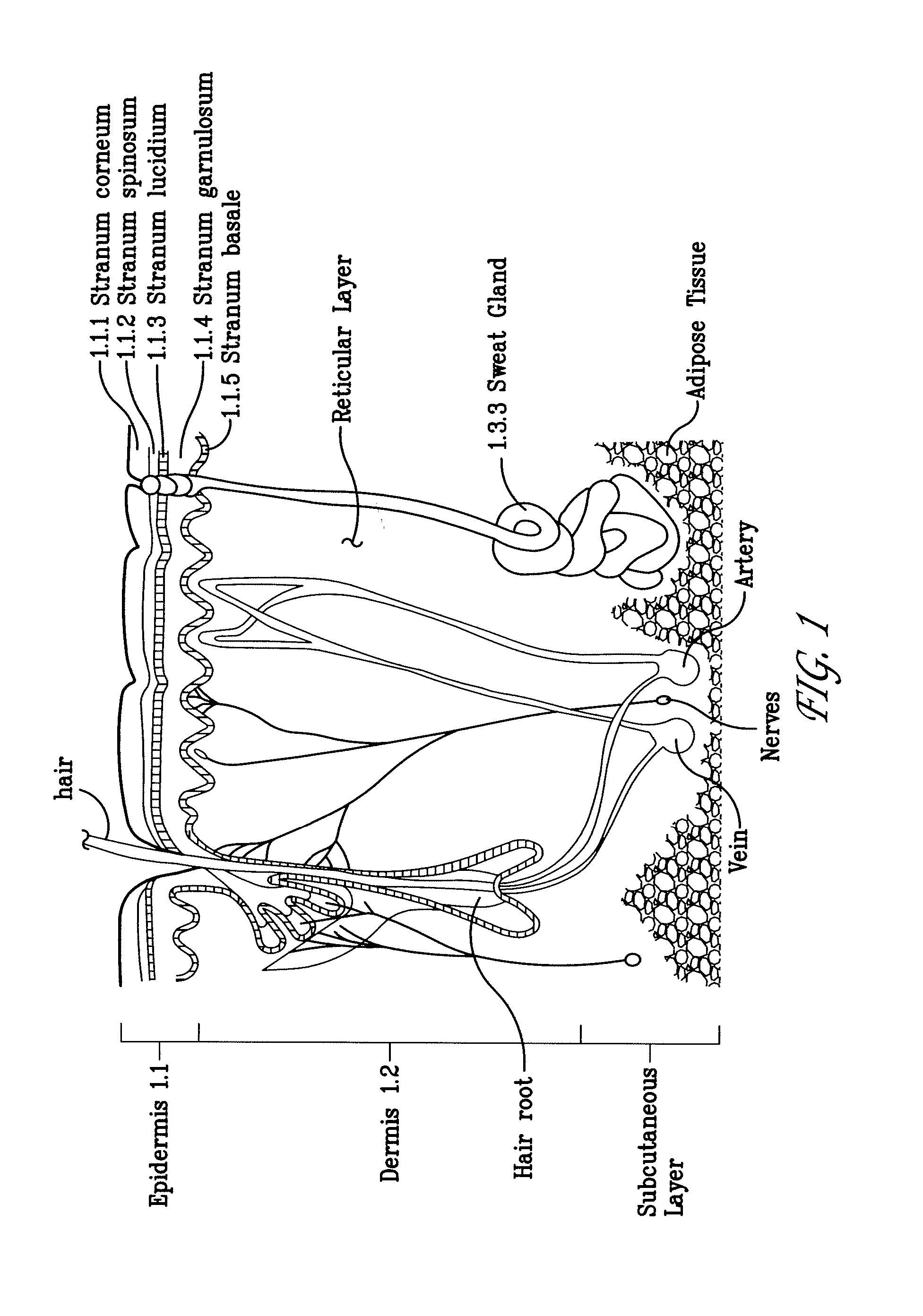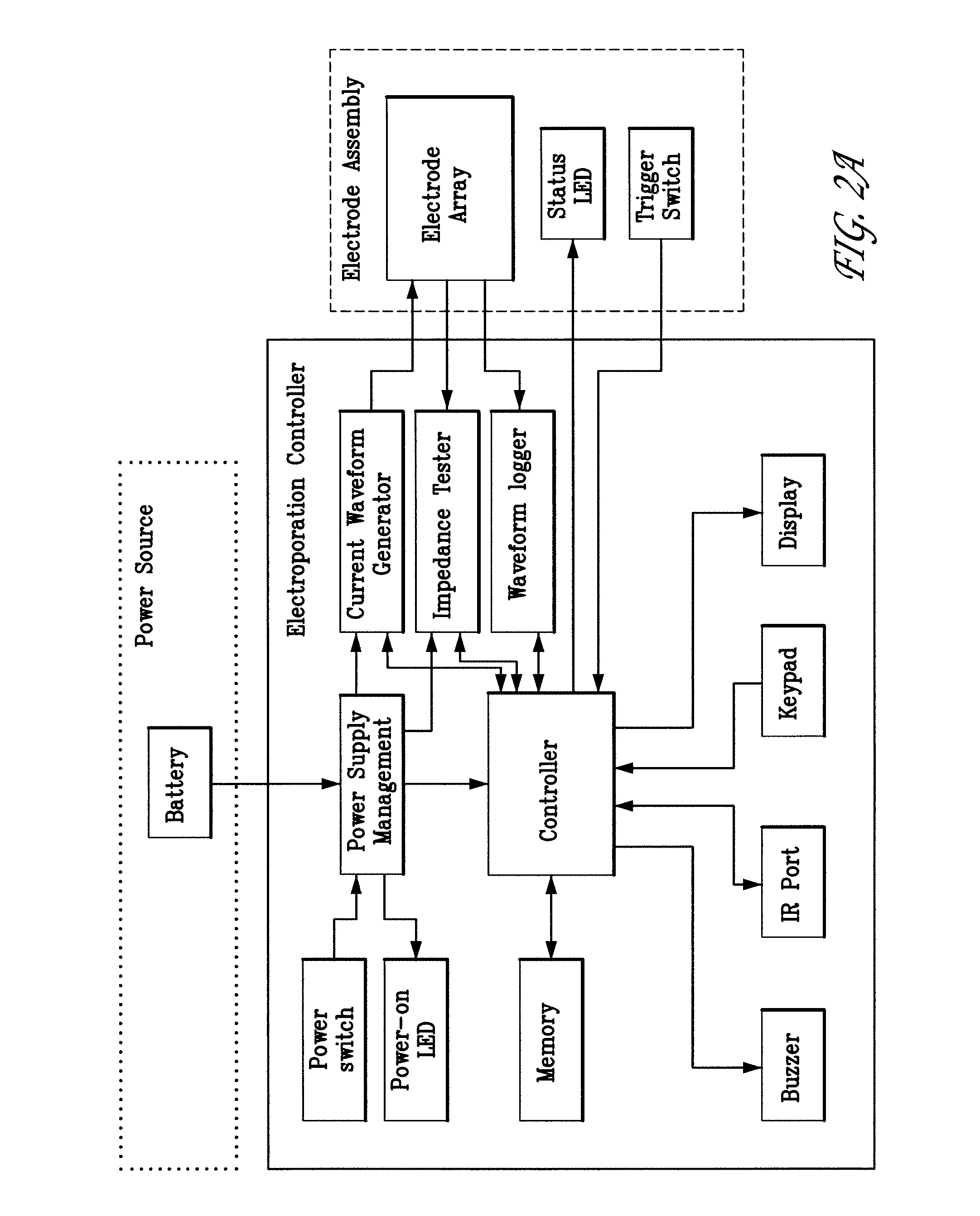Electroporation devices and methods of using same for electroporation of cells in mammals
a technology of electroporation device and electroporation method, which is applied in the field of electroporation device and method of using same for cell electroporation in mammals, can solve the problems of limited scope of vivo plasmid transfer technology, effective entry of antigens,
- Summary
- Abstract
- Description
- Claims
- Application Information
AI Technical Summary
Problems solved by technology
Method used
Image
Examples
example 1
Operation of the Electro-Kinetic Device (“Skin EP Device”) for Skin Electroporation
[0132] First, the power to the skin EP device is turned on. The firmware remains in the idle state until input is received from the user. To start an electroporation sequence, a password is entered to obtain an introductory prompt on the LCD. At this point, the handle assembly activator switch is pressed. The user then enters a number, preferably a subject identification number, which is logged with the data of every pulse stored for later download. The number is preferably entered using a numeric keypad. The biomolecule formulation is than administered as an ID or SQ injection in a reasonably small injection volume, ideally 25-200 skin liters and the skin electrode array is inserted into the skin to completely surround the injection area which is easily visualized. The user is then prompted, via a “beep” from the buzzer, to press the activation switch to continue the electroporation sequence. After ...
example 2
Data Acquisition and Storage
[0137] The skin EP device software or firmware enables real time data acquisition and storage in non-volatile memory. FIG. 2C illustrates a first portion of data that may be collected during the electroporation process. The first section of the file header contains the file name (“2.1”) and the animal number (“2.2”). The columnar data (“2.3”) describes the pulse in sequence, the wait time before pulsing, the pulse width, and the pulse current for each of the three electrodes. FIG. 2.4 illustrates a second portion of data, which identifies the configuration of each electrode during a given pulse sequence. FIG. 2.5 illustrates a formatted version of a third portion of raw data for the same electroporation. The file is downloaded from the skin EP device as a Microsoft Excel CSV file. The data are copied and pasted into a template Microsoft Excel Spreadsheet file. Columns in the spreadsheet represent measured voltage (V) and current (Amps) during the electro...
example 3
Plasmid Design, Delivery Methods, and Experimental Study in Pigs
[0138] Plasmid construction. pEGFP-N1 (Clontech, Mountain View, Calif.) used in the experiments described herein, encodes a red-shifted variant of wild-type GFP which has been optimized for brighter fluorescence and higher expression in mammalian cells (excitation maximum=488 nm; emission maximum=507 nm.) pEGFP-N1 encodes the GFPmut1 variant which contains the double-amino-acid substitution of Phe-64 to Leu and Ser-65 to Thr. The coding sequence of the EGFP gene contains more than 190 silent base changes which correspond to human codon-usage preferences. Sequences flanking EGFP have been converted to a Kozak consensus translation initiation site to further increase the translation efficiency in eukaryotic cells. SV40 polyadenylation signals downstream of the EGFP gene direct proper processing of the 3′ end of the EGFP mRNA. The vector backbone also contains an SV40 origin for replication in mammalian cells expressing t...
PUM
 Login to View More
Login to View More Abstract
Description
Claims
Application Information
 Login to View More
Login to View More - R&D
- Intellectual Property
- Life Sciences
- Materials
- Tech Scout
- Unparalleled Data Quality
- Higher Quality Content
- 60% Fewer Hallucinations
Browse by: Latest US Patents, China's latest patents, Technical Efficacy Thesaurus, Application Domain, Technology Topic, Popular Technical Reports.
© 2025 PatSnap. All rights reserved.Legal|Privacy policy|Modern Slavery Act Transparency Statement|Sitemap|About US| Contact US: help@patsnap.com



